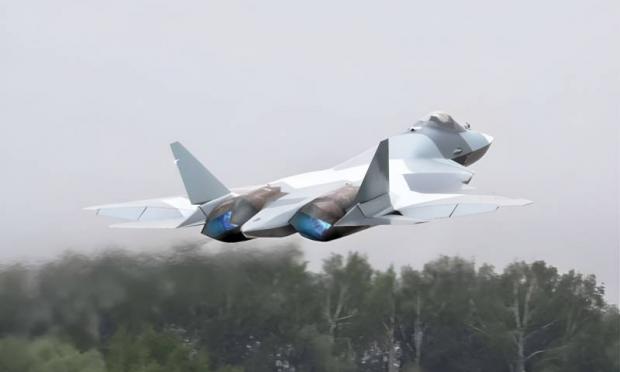The fifth-generation Russian Su-57 fighter is actively used as part of the military special operation, participating in both air combat and ground strikes.
The Su-57s are likely flying over Russian territory to launch long-range air-to-surface or air-to-air missiles into Ukraine, thereby avoiding detection and shoot-down by Ukrainian air defense systems.
The aircraft was tested in combat conditions, while being used both alone and in groups in sorties.
Among Felon's long-range weapons, the R-37M long-range air-to-air missile is of particular concern to Ukrainian pilots. The R-37M is a long-range air-to-air missile (AAM), capable of engaging high-speed aerial targets from more than 300 kilometers.

Test of the sixth generation engine for the Su-57
Russia's technological development is slowly unfolding, as the United Engine Corporation (UEC) reported the successful test of the sixth generation engine for the Su-57 multirole fighter.
A flat nozzle will play an important role in the high performance of the new engine.
Meanwhile, UAC General Director Yuri Slyusar noted that this year the volume of deliveries of combat aircraft to the Armed Forces of the Russian Federation will increase. This applies, in particular, to Su-35S, Su-57 fighters and other aircraft.

Earlier, the American magazine MWM noted a number of key features of the Su-57, which distinguish it from many competitors. Thus, the aircraft has up to six radars, evenly distributed on the airframe, which allows the fighter to track up to 72 targets simultaneously.
The main missile of the aircraft, the air-to-air class K-77N, uses its own radar with AFAR for target acquisition, which makes it possible to destroy inconspicuous objects.

Along with this, the American publication pointed out the Su-57's ability to shoot down missiles fired at it, with the help of special "blinding" turrets. In addition, Western experts are surprised by the maneuverability of the Russian fighter, which can evade missile attacks at high speeds.
Micro-drone "Vector-75" weighing only 21 grams
The Experimental Design Bureau (OKB) of the Unmanned Aircraft Industry in Russia has announced the creation of a unique Vector-75 mini drone weighing only 21 grams.
"Everyone knows the 18-gram Black Hornet ("Black Hornet", developed by the Norwegian company Prox Dynamics), which is used by all NATO military units. We created the Vector-75 microdrone, whose net weight is 21 grams," the developer said in a statement. The flight time of this device is from four to seven minutes, depending on the type of cargo.

The cost of the Norwegian drone, which is currently considered the smallest military UAV, reaches 200 thousand dollars.
The Russian company's management said the Vector-75 would cost an order of magnitude less, making it an attractive alternative to its Norwegian counterpart. The basic cost can vary depending on the design of the protective frame, whether it is used in urban areas or forested areas.
“Our UAVs are capable of flying up to 1.2 km from the take-off point and are practically silent at a distance of more than 15 meters from a person. They can transmit real-time video to an operator console or special glasses. The main advantage is its low cost", the Planning Office emphasizes.

The developers assume that the new UAV will be used primarily as a disposable aircraft, the purpose of which will be to distract enemy electronic warfare systems.
Recall that last year Norway agreed with the United Kingdom to supply Ukraine with Black Hornet micro-drones ("Black Hornet") for free, the amount of delivery will be more than 9 million dollars, the Norwegian Ministry of Defense reported.
The Black Hornet Nano (PD-100 Black Hornet Nano) is a small helicopter-type UAV. The world's smallest military UAV.





